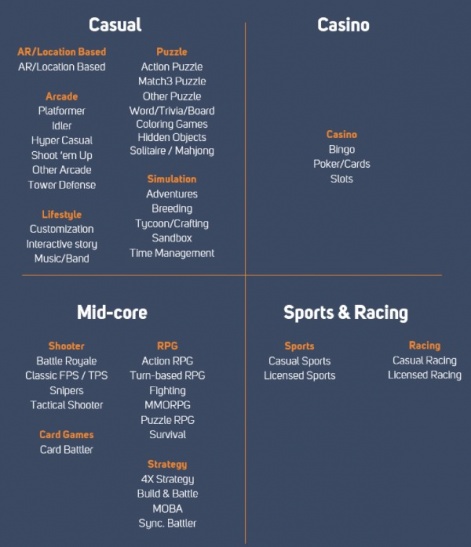Joel Julkunen is the head of game analysis at leading mobile game market data provider with intelligence GameRefinery.
When creating a hit product, understanding the market, your competitors and your target audience is crucial for success.
In mobile games, this statement holds exceptionally true, because the struggle for customers is an everyday reality.
To maximize your chances of success, you should properly research the genre you’re planning to enter.
This entails a thorough mapping of your current rivals, their performance, and featureset. But it might be difficult to get a comprehensive view of the competition or even define what genre your game represents.
Yet, with so many different game archetypes, hybrids and constant innovation, it’s not easy to categorize games in a meaningful and consistent way.
A flexible, three-layered model
At GameRefinery, we’ve been working hard on a solution to help our clients.
The key thing we required from our new taxonomy was flexibility.
The key thing we required from our new taxonomy was flexibility.
Since there are dozens of game archetypes and new ones popping up, a too static approach would quickly become obsolete.
So to keep things dynamic, it should be easy to add new genres to the model; something our three-layered hierarchy - Game Category > Game Genre > Game Subgenre - makes possible.
Here’s how it works: each game is given a Subgenre based on its features and defining game mechanics.
For example, a game with a match-3 core and character development meta features would go under the ‘Puzzle RPG’ Subgenre.
The Subgenre is then automatically assigned to a Genre, which is in turn assigned to a higher-level Category. As a result, each game belongs to one – and only one – Category, Genre and Subgenre.
This singularity is a key requirement to use genres as a solid basis for market research. If one game belongs to more than one genre, genre feasibility measurement and comparison becomes really tricky.

Using this three-layered approach, we’ve been able to group all games under distinctive genres, which in turn acts as an extremely helpful taxonomy for market and game research.
As you can see, there are four main Categories: Casino; Sports & Racing; Mid-Core; and Casual games.
The reason for this separation is that casino, racing, and sports games have unique target audiences and core features in comparison to other games.
The Subgenre level opens up a comprehensive view of the mobile gaming space in all its diversity.
For example, hunting sports games might have identical game mechanics to sniper games, but the player base is different.
Going down deeper
On a Genre level, things get even more interesting, as specific game archetypes receive groups of their own, and more meaningful differentiation appears.
Using these 12 Genres, we’re able to cover the current mobile game archetypes and gain a better understanding of which genres are gaining or losing ground in any given market.
However, to drill down to your closest competitors and research your game’s market opportunities, you need to add a third layer to the mix.
The Subgenre level opens up a truly comprehensive view of the current mobile gaming space in all its diversity and enables a detailed comparison.
For example, when Battle Royale games took the world by storm, we created a new Subgenre to give our clients the possibility to research Battle Royale games as a separate game type and market.
To find out more details about how GameRefinery uses this methodology to create actionable insights in terms of which Genres and Subgenres are getting the most downloads or making the most revenue, please visit GameRefinery and try the service for free.






















